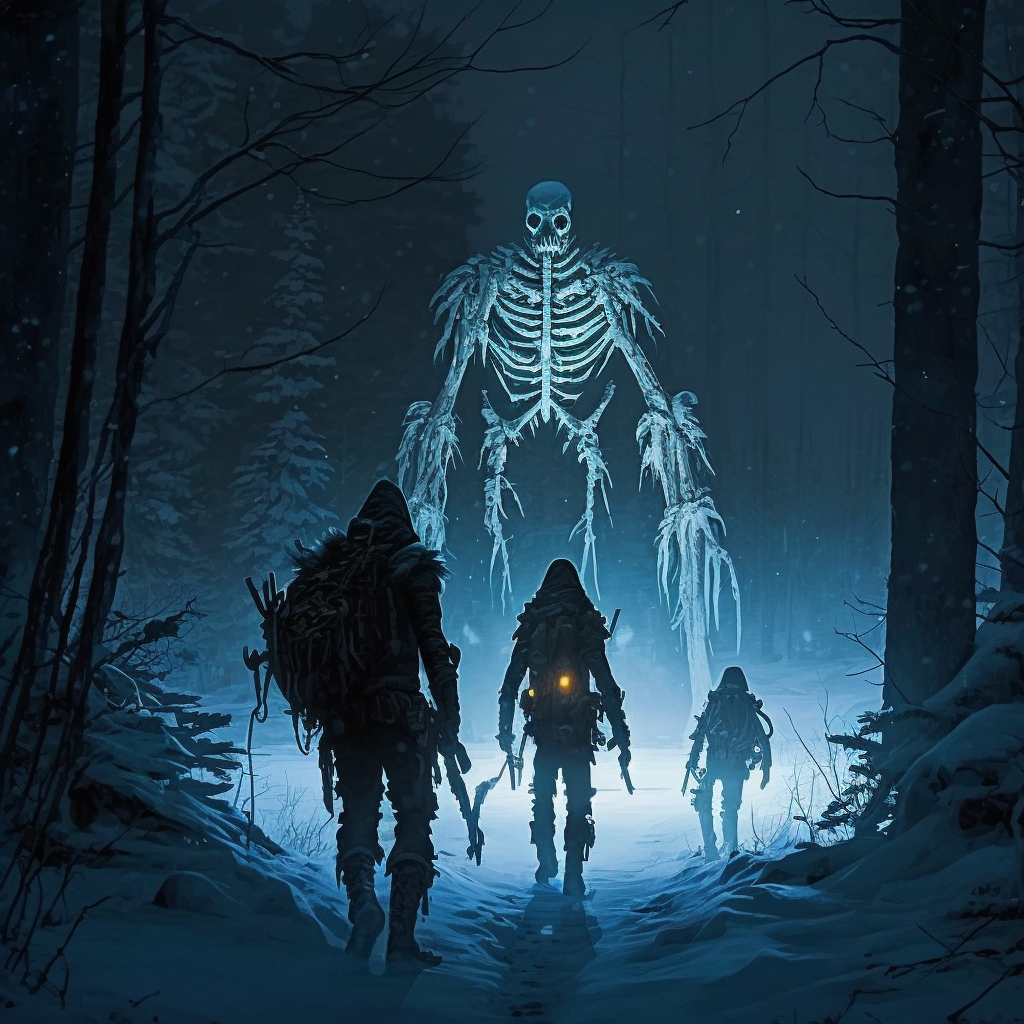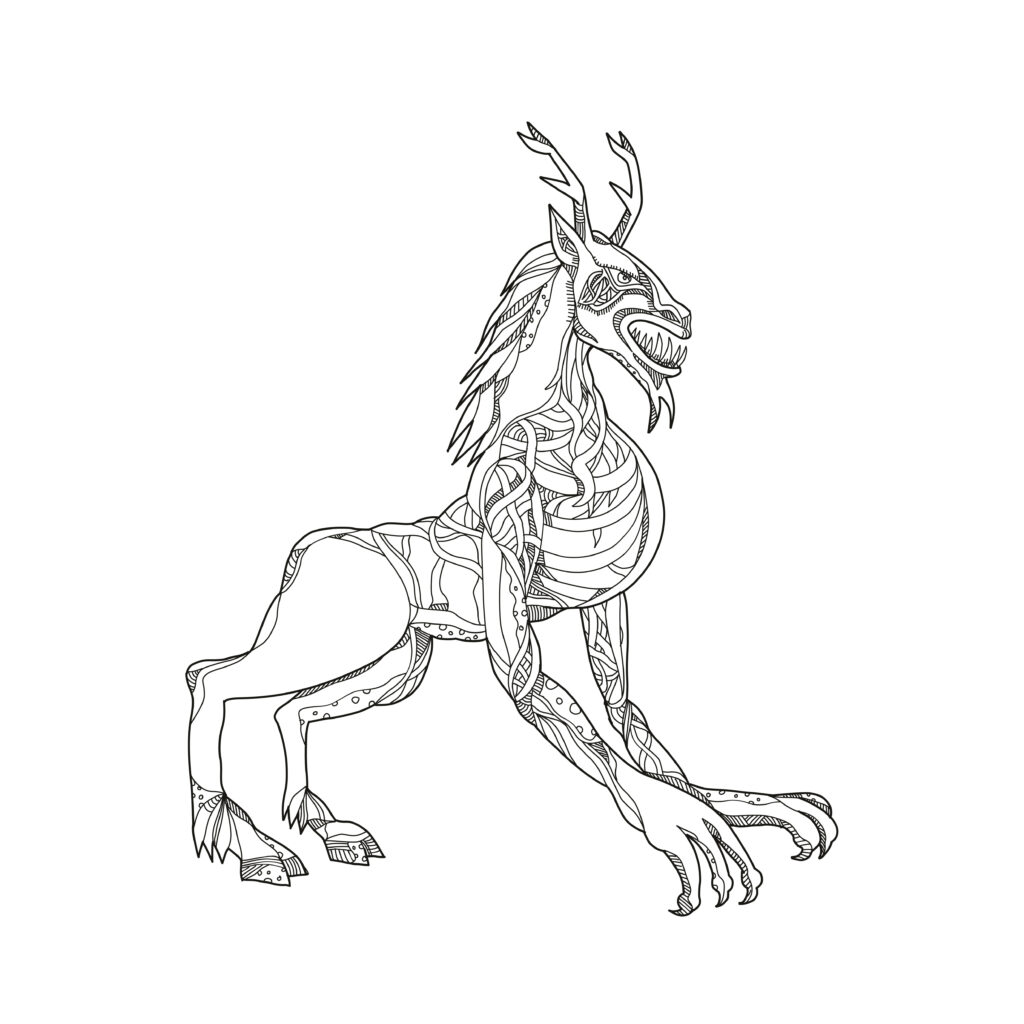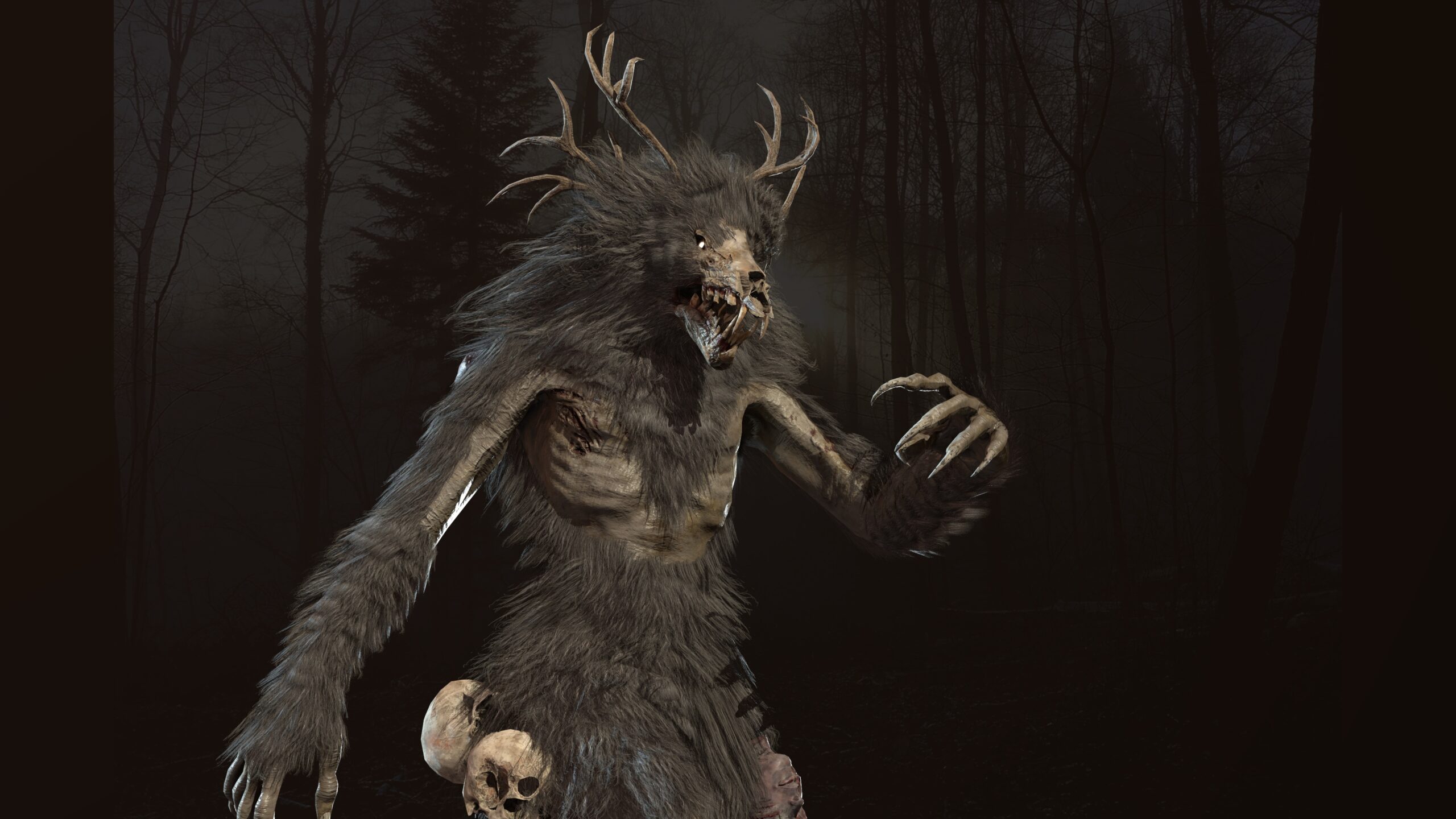The Wendigo is a creature of Native American folklore that has been the subject of many sightings and stories.
Some believe that the creature is real, while others dismiss it as a mere legend.
Despite the lack of concrete evidence, there have been numerous accounts of sightings and encounters with the creature that have left many wondering if the creature is fact or fiction.
One of the most compelling pieces of circumstantial evidence in favor of the Wendigo’s existence is the numerous sightings and encounters that have been reported over the years.
Many people claim to have seen the creature in the forests of the Great Lakes region and the Atlantic Coast of both Canada and the United States.
These sightings have been described as terrifying experiences that have left witnesses shaken and afraid.
Additionally, there have been many stories and legends passed down through generations of Native American tribes that describe encounters with the Wendigo.
These stories describe the creature as a cannibalistic beast with an insatiable hunger for human flesh.
While some dismiss these stories as mere folklore, others see them as evidence of the creature’s existence.
What is the Wendigo?
The Wendigo is a creature that has been featured in Native American folklore for centuries.
It is said to be a cannibalistic beast that preys on humans and has supernatural powers.
The Wendigo is often described as a tall, thin, and emaciated figure with ashen flesh.
Some legends say that it has sunken or glowing eyes and sharp yellowed fangs and claws.
Its lips are chewed or entirely missing because it has eaten them.
According to Britannica, the Wendigo is a giant creature that can grow up to 15 feet (4.5 meters) tall. It may also be described as a beast that grows larger the more it eats.
The creature is often associated with winter and cold weather, and it is said to have powers over the weather, making blizzards and other winter storms.
The Wendigo is said to be a spirit that possesses humans who have committed the sin of cannibalism and
is also said to possess those who are selfish and gluttonous. Once possessed, the person becomes a Wendigo, and they are driven to consume human flesh.
The Wendigo is known for its insatiable hunger, and it is said that no matter how much it eats, it is never satisfied.
Sightings of the Wendigo

Historical Sightings
The legend of the Wendigo has been around for centuries, and there have been many reported sightings of the creature throughout history.
One of the earliest recorded sightings of the Wendigo was by a French explorer named Paul Le Jeune in the 1600s.
He reported seeing a “devilish creature” that was “as tall as a tree with a lipless mouth and jagged teeth.”
Another historical sighting of the Wendigo was reported by a group of Ojibwe hunters in the late 1800s.
They claimed to have seen a creature that was “as thin as a skeleton, with sunken eyes and long, yellowed fangs.”
The hunters believed that the creature was a Wendigo and that it was stalking them.
There are also many stories from Native American folklore about encounters with the Wendigo.
Some of these stories describe the creature as a malevolent spirit that possesses humans and turns them into cannibals.
Contemporary Sightings
Although sightings of the Wendigo have become less common in recent years, there are still occasional reports of encounters with the creature.
In 2019, there were reports of mysterious howls in the Canadian wilderness that some believed were caused by the Wendigo.
There have also been reports of Wendigo sightings in the United States, particularly in the northern states.
In 2015, a group of hikers in Minnesota claimed to have seen a creature that matched the description of the Wendigo.
They reported that the creature was “emaciated and covered in matted fur, with sunken eyes and sharp claws.”
While many of these sightings can be explained away as misidentifications of known animals or hoaxes, there are some that remain unexplained.
Whether or not the Wendigo is a real creature or simply a legend is still a matter of debate, but the reports of sightings continue to fascinate and terrify people to this day.
Circumstantial Evidence

Physical Evidence
While there is no direct physical evidence of the existence of the Wendigo, there have been several sightings and encounters that suggest its presence.
For example, in 1878, a group of Cree hunters reported seeing a creature with a skeletal frame, glowing eyes, and long claws in the woods of northern Alberta, Canada.
In 1907, a trapper named Jack Fiddler claimed to have killed 14 Wendigos in his lifetime, and his account was corroborated by other members of his tribe.
Additionally, there have been reports of strange footprints in the snow that resemble those of a large, bipedal creature.
Some of these footprints have been found in areas where sightings of the Wendigo have been reported.
Cultural Evidence
The legend of the Wendigo has been a part of Native American folklore for centuries.
Many tribes, including the Algonquin, Cree, and Ojibwe, have their own versions of the story.
The Wendigo is often described as a malevolent spirit or demon that possesses humans and drives them to commit acts of cannibalism.
The legend is deeply ingrained in the culture of these tribes, and many people believe that the Wendigo is a real entity that can cause harm.
Furthermore, there have been reports of strange behavior and unexplained disappearances in areas where the Wendigo legend is prevalent.
Some people believe that these incidents are linked to the Wendigo, although there is no concrete evidence to support this theory.
Theories Surrounding the Wendigo
Psychological Explanations
Many psychologists believe that the wendigo legend is a manifestation of the human psyche.
According to this theory, the wendigo represents the dark side of human nature, including greed, selfishness, and isolation.
The legend may have originated as a cautionary tale about the importance of community and the dangers of individualism.
Some experts suggest that the wendigo legend is also related to cannibalism, which was practiced by some Native American tribes in times of famine.
The legend may have served as a way to discourage cannibalism and reinforce the taboo against eating human flesh.
Spiritual and Supernatural Explanations
Others believe that the wendigo is a real entity, a malevolent spirit that possesses human beings and drives them to commit unspeakable acts of violence and cannibalism.
According to this theory, the wendigo is a supernatural force that can only be defeated through spiritual means.
Some Native American tribes believe that the wendigo is a guardian spirit that protects the natural world from human encroachment.
In this interpretation, the wendigo is not evil but rather a necessary force that maintains the balance of nature.
Despite the lack of concrete evidence, reports of wendigo sightings continue to surface.
Some believe that the wendigo is a real creature that roams the wilderness, while others see it as a symbol of the human condition.
Ultimately, the mystery of the wendigo remains unsolved, and its true nature may never be fully understood.
Debunking the Wendigo

Scientific Explanations
Despite the many reported sightings and legends surrounding the Wendigo, there are several scientific explanations that can debunk the existence of this creature.
One such explanation is that the Wendigo is simply a product of human imagination, born out of the need for caution and survival in the harsh northern wilderness.
The stories of the Wendigo may have served as a warning to children not to wander too far into the woods, as well as a way for communities to reinforce the importance of sharing resources and working together for survival.
Another scientific explanation for the Wendigo is that it is a misidentification or exaggeration of known animals.
For example, some sightings of the Wendigo may actually be sightings of bears or other large predators, while the supposed supernatural abilities of the Wendigo may simply be an exaggeration of the abilities of real animals.
Hoaxes
Another possible explanation for the Wendigo is that it is simply a hoax.
There have been many reported sightings of the creature over the years, but many of these sightings have been proven to be hoaxes or exaggerations.
In some cases, people may have deliberately created hoaxes in order to gain attention or fame, while in other cases, sightings may have been misinterpreted or exaggerated over time.
One famous example of a Wendigo hoax is the case of Jack Fiddler, a Cree chief who claimed to have killed over 14 Wendigos in the early 1900s.
While Fiddler’s claims were initially taken seriously by some, it was later revealed that he had likely been exaggerating or fabricating his stories in order to gain power and influence within his community.
Misidentifications
Finally, it is possible that many supposed sightings of the Wendigo are simply misidentifications of known animals or natural phenomena.
For example, some sightings of the Wendigo may actually be sightings of moose or other large animals, while strange noises or movements in the woods may be attributed to the creature when they are actually caused by wind or other natural forces.
It is also possible that some supposed Wendigo sightings are simply cases of pareidolia, a psychological phenomenon in which the brain perceives familiar patterns or shapes in random stimuli.
For example, a person may see a tree stump or rock formation and mistake it for the shape of a creature like the Wendigo.
Conclusion
In conclusion, the mystery of the Wendigo continues to fascinate and terrify people to this day.
While there is no concrete evidence to support the existence of the creature, there have been numerous sightings and encounters reported over the years.
Some believe that the Wendigo is a real entity, while others see it as a symbol of the human condition.
Regardless of its true nature, the legend of the Wendigo serves as a cautionary tale about the dangers of isolation, greed, and individualism.
Whether the Wendigo is fact or fiction, it remains an enduring part of Native American folklore and a source of fascination for those who seek to understand the unknown.

